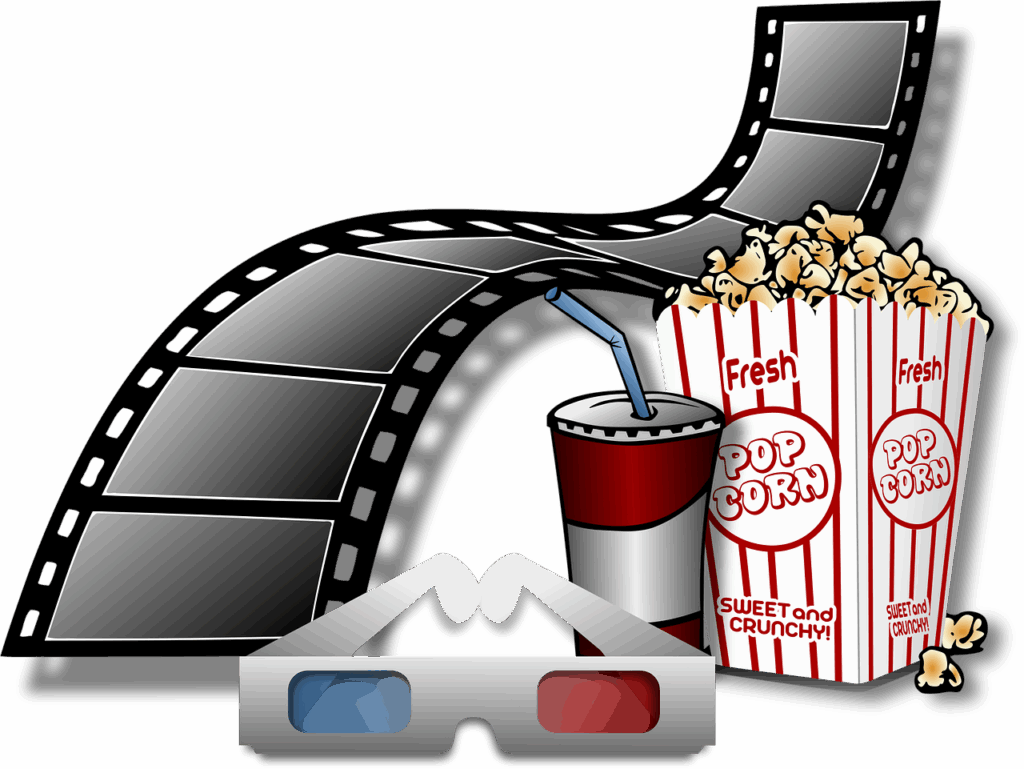Before the days of Netflix and chill, long before there was Hulu, or anything with a plus on the end of it, there was the video rental store. These hallowed institutions were once the cornerstone of movie nights and weekend entertainment, serving as a hallowed community hub for browsing and perusing visual entertainment. Stepping into one of these vibrant spaces was an experience in itself: rows of VHS tapes or DVDs lined the walls, each case promising a new adventure, accompanied by the distinct smell of plastic cases and the hum of movie trailers playing in the background. It was a ritual, a social outing, and for many, the true start of a weekend.
For decades, these stores thrived, evolving from small, independent shops to industry giants. The ability to watch movies at home was no longer a luxury but a routine part of life, transforming family entertainment and personal leisure. While the golden age of these cinematic sanctuaries has largely passed, their indelible mark on our cultural landscape, their unique quirks, and the sheer joy they brought, remain vivid in collective memory. The thrill of discovering a hidden gem or finally finding a sought-after new release made the experience unforgettable, far removed from today’s algorithm-driven suggestions.
We embark now on a tearful and nostalgic journey back to those simpler times, to the heyday of video rentals. This exploration will illuminate the rise and ultimate fade of some of the most iconic dedicated video stores that once defined our neighborhoods. From towering national chains to beloved regional gems and niche havens for cinephiles, each played a pivotal role in shaping our shared cinematic past. Let’s remember these institutions, ‘gone but not forgotten,’ and appreciate the unique experiences they offered before the digital wave transformed everything.
1. **Blockbuster Video: The Undisputed King of the Rental Realm**In the annals of home entertainment, Blockbuster Video stands as the undisputed godfather of video rentals, a behemoth that once reigned supreme. At its zenith, this colossal chain boasted over 9,000 stores worldwide, transforming the simple act of renting a movie into a cultural phenomenon. The iconic blue and yellow sign was more than just a beacon; it was a ‘bat signal for kids in the back of minivans and station wagons everywhere,’ heralding the exciting promise of ‘getting our VHS on, baby.’ It cultivated a strong brand identity, friendly, family-oriented, and utterly synonymous with the cherished ‘movie night.’
Part of the Blockbuster experience was the tactile joy, and sometimes the exquisite frustration, of the hunt. Renting a movie was a ritual of picking out a VHS tape or DVD, anxiously hoping the title you wanted wasn’t already checked out. This ‘tactile experience of picking up the box of the movie you wanted, but maybe then discovering it was not because the movie was already checked out,’ was described as ‘a blessing and a curse.’ The anticipation, the browsing, the vibrant covers – these were intrinsic to the adventure, a stark contrast to today’s instant digital gratification. Blockbuster’s nostalgic ‘Blockbuster night’ feeling forged deep emotional ties with millions of eager renters.
However, even kings can falter when their kingdoms evolve beyond their grasp. Blockbuster’s brand was fundamentally built on physical stores, an allegiance that proved to be its Achilles’ heel. Despite having the opportunity to ‘buy Netflix in its early days’ in 2000 for a mere $50 million, the company famously ‘turned it down, dismissing it as a niche service.’ This critical misstep, alongside its failure to embrace the burgeoning digital transformation of media rental, left it ‘stuck in the past.’ Its branding failed to pivot with its audience, who increasingly ‘no longer wanted to drive to a store to rent a movie when they could access films from their own homes with a few clicks.’
The rise of Netflix, first as a DVD-by-mail service that eliminated notorious late fees, and then as a revolutionary streaming platform in 2007, decisively sealed Blockbuster’s fate. The company clung ‘to its traditional rental model for too long,’ and by the time it launched its own mail-based and streaming services, it was far ‘too late.’ By 2010, the once-unassailable empire filed for bankruptcy, leading to the closure of thousands of its beloved locations. Today, a singular Blockbuster store endures in Bend, Oregon, serving as a poignant, ‘bittersweet reminder of the golden age of video rentals’ and a tangible link to a bygone era of entertainment.

2. **Hollywood Video: The Glamorous Rival with a Cinephile’s Heart**Every titan needs a formidable rival, and for Blockbuster, that came in the sophisticated guise of Hollywood Video. This chain presented itself as Blockbuster’s ‘arch enemy,’ striving to evoke ‘the glamour of the movies’ with its distinctive red carpet decor and charming movie star cutouts. Its purple and yellow color scheme and bright, glitzy ambiance were a deliberate counterpoint to Blockbuster’s more utilitarian blue and yellow, aiming to capture a different segment of the movie-loving public. Hollywood Video positioned itself not just as a rental store, but as an experience, a miniature gateway to the allure of Tinseltown.
What truly distinguished Hollywood Video, and endeared it to a dedicated clientele, was its commitment to the art of cinema. Catering explicitly ‘to cinephiles,’ the chain meticulously distinguished itself ‘by offering a wider selection of foreign and independent films.’ This curated collection appealed to those seeking more than just mainstream Hollywood blockbusters, offering an education in global and niche cinema that was hard to find elsewhere. It was a haven for film buffs who appreciated the depth and breadth of its offerings, making it a crucial resource for discovering diverse storytelling and artistic visions.
Despite its sophisticated offerings and robust competitive promotions, including ‘special promotions and rewards programs,’ Hollywood Video, like so many others, ultimately ‘could not survive the digital shift.’ Its demise in 2010 marked a profound ‘end of an era for many film buffs who relied on their curated selections,’ leaving a void that streaming algorithms, despite their vastness, often struggle to fill. The closure underscored the industry-wide struggle to adapt as digital convenience increasingly replaced the physical, curated experience that Hollywood Video had so passionately cultivated. Its memory lingers as a testament to a time when dedicated curation, rather than sheer volume, defined a superior cinematic journey.
3. **Family Video: The Resilient Community Anchor**In the landscape of video rental giants, Family Video carved out its own unique niche, operating as a true ‘Midwestern video rental stalwart’ that demonstrated remarkable resilience. Unlike the flashy glitz of Hollywood Video or the corporate dominance of Blockbuster, Family Video embraced a more grounded identity, becoming the ‘homey-man-about-town video rental chain.’ It was a familiar, approachable presence, devoid of pretension, making it feel less like a corporate entity and more like an extension of the neighborhood itself. This humble approach fostered a deep sense of loyalty and community connection.
Family Video was much more than just a place to rent movies; it was a bona fide ‘community hub.’ It consistently ‘hosted local events and supported community programs like little leagues,’ weaving itself into the very fabric of local life. This commitment to community building, offering a personalized service that digital platforms could never replicate, created a unique bond with its patrons. Its neighborhood-friendly vibe extended to its business model, which reportedly included ‘selling real estate to keep stores afloat,’ a testament to its innovative, albeit eventually unsustainable, strategies to prolong its existence.
While many of its competitors succumbed early to the inexorable march of digital streaming, Family Video showcased an extraordinary longevity. It ‘outlasted many of its competitors, surviving well into the 2020s,’ finally closing its last stores in 2021. This remarkable persistence in the face of streaming giants is a powerful ‘testament to the enduring appeal of physical media and personalized service.’ Family Video’s story reminds us that while convenience reigns, the value of a physical gathering place, offering genuine connection and local support, remains an irreplaceable aspect of cultural memory.
Read more about: Beyond the Glitz: 15 Celebrities Who Get Real About Their Mental Health Journeys

4. **Movie Gallery: The Rural Champion’s Brief Ascent**Movie Gallery distinguished itself from the more dominant chains like Blockbuster by adopting a shrewd and successful niche strategy. It ‘made a name for itself by focusing on rural areas across the U.S.,’ identifying and serving communities that larger competitors often overlooked. This approach allowed them to forge genuine connections with patrons, offering a local alternative that resonated deeply in smaller towns where big-box stores were less prevalent. It wasn’t about flashy grandeur, but about being a reliable and accessible source of entertainment for underserved populations.
Further enhancing its community-centric approach, Movie Gallery thoughtfully ‘stocked region-specific titles to appeal to local tastes.’ This level of personalization, catering to the unique cinematic preferences and cultural nuances of its diverse rural clientele, fostered a strong sense of belonging and loyalty. The company’s ambition saw a significant moment in 2005 with its ‘acquisition of Hollywood Video,’ an event that briefly propelled it to become ‘a major player in the industry,’ signaling a potential challenge to Blockbuster’s hegemony.
However, even this strategic expansion and community focus could not ultimately shield Movie Gallery from the encroaching digital tide. Despite its momentary ascent to prominence, ‘streaming still got the best of this chain a few years later.’ Like so many others rooted in physical media and traditional rental models, it ‘struggled to compete with streaming services and eventually shut down.’ Movie Gallery’s legacy speaks to the power of niche markets and local adaptation, yet also highlights the overwhelming force of technological disruption that spared few in the video rental landscape.
5. **West Coast Video: The Cult Classic Connoisseur**While perhaps ‘not the household name of Blockbuster and Hollywood Video,’ West Coast Video carved out its own cherished identity, becoming a ‘beloved regional chain that left a lasting impression on movie lovers across the Northeast.’ This chain thrived by understanding its audience and curating a selection that spoke directly to their cinematic passions. It fostered a unique atmosphere, managing to feel both like a regional chain and possessing ‘a cozy, mom-and-pop feel,’ offering a personal touch that resonated deeply with its customer base.
West Coast Video distinguished itself through its particular devotion to the esoteric and the iconic. It was famously ‘known for stocking up on cult classics like Goonies and your Pulp Fiction-kind of titles,’ becoming a go-to destination for those seeking films off the beaten path or timeless, genre-defining works. This focus on niche, beloved cinema created a vibrant community of like-minded film enthusiasts who valued the treasure hunt aspect of finding these cherished titles, an experience far richer than a simple search bar query.
Adding to its allure, West Coast Video pioneered a deal that became legendary among budget-conscious renters: the ‘5 for 5 for 5’ — ‘five movies for five days for five dollars.’ This innovative pricing structure was a ‘game-changer,’ making extensive cinematic exploration incredibly accessible and affordable for families and individuals alike. Although demand for physical rentals inexorably declined, leading to locations ‘shutting down one by one,’ West Coast Video remains ‘gone but not forgotten,’ its memory living on in the hearts of those who fondly recall its unique deals and unparalleled selection of cult favorites.
6. **Video Update: The Tech-Forward Trailblazer**Video Update, though perhaps not as widely known as the colossal Blockbuster, carved out a significant space in the evolving video rental market through its pioneering spirit and technological foresight. It stood as a true innovator in an era largely still reliant on antiquated systems, boldly introducing computerized inventory management and membership cards. When many competitors were still grappling with paper records and handwritten logs, Video Update was already streamlining the rental process, offering a glimpse into the future of organized and efficient entertainment access. This embrace of modern solutions set a new benchmark for efficiency and customer service, making the rental process smoother and more reliable for its patrons.
Beyond its internal operational advancements, Video Update garnered considerable praise, particularly from parents, for being the vanguard of the “no late fees” movement. This revolutionary policy directly challenged the prevailing, often punitive, rental model that had become a source of frustration for countless moviegoers, where a forgotten return could quickly escalate into a substantial charge. By eliminating the anxiety of overdue charges, Video Update cultivated a customer-friendly environment, fostering goodwill and demonstrating a deep understanding of consumer desires long before it became an industry standard. It was a refreshing change that prioritized customer loyalty over penalty revenue.
The stores themselves embodied a forward-thinking aesthetic, characterized by their bright and modern interiors, a stark contrast to some of the more cluttered or dimly lit establishments of the time. This commitment to a clean, inviting atmosphere enhanced the browsing experience, making the act of selecting a film feel contemporary and engaging. The well-lit aisles and clear organization made it easy for customers to navigate the extensive selections, creating a pleasant and stress-free environment that invited longer stays and more thorough exploration of available titles.
Video Update’s adventurous spirit even extended to experimenting with supplementary offerings, such as in-store gaming stations and CD rentals, showcasing a willingness to diversify and explore new revenue streams. These ventures, while ultimately short-lived in their broader impact, provided a glimmer of hope and inspiration for other rental companies, illustrating the potential for adaptation within a rapidly changing entertainment landscape. This proactive approach to innovation, however, despite its initial promise, could not ultimately stem the tide of digital disruption that would soon engulf the entire industry, proving that even the most forward-thinking physical rental model had an expiration date.

7. **Suncoast Motion Picture Company: A Cinephile’s Treasure Trove**Suncoast Motion Picture Company transcended the conventional definition of a video rental store, emerging as a veritable “movie lover’s paradise” where the pursuit of cinematic passion went far beyond a simple rental transaction. While it certainly offered a selection of films for temporary enjoyment, its true allure lay in its specialization, catering to a distinct audience with a profound appreciation for the breadth and depth of film culture. It became a cherished destination for those seeking a tangible connection to the magic of movies, often spending hours immersed in its offerings.
What truly set Suncoast apart was its meticulously curated inventory, extending well beyond mainstream releases to include “rare VHS tapes, collectibles, and movie memorabilia.” For collectors and dedicated cinephiles, these stores were akin to archaeological sites, promising the thrill of unearthing cinematic gems that were often impossible to find elsewhere. This focus transformed the retail space into a vibrant museum of film, where one could not only rent a movie but also acquire a piece of cinematic history, from obscure foreign titles to classic film posters, enriching personal collections and cultural understanding.
The experience of visiting a Suncoast store was unique; it was a blend of retail therapy and cultural immersion. Customers weren’t just renting a movie; they were engaging with a passion. The shelves were filled with items that spoke to a deeper love for cinema, from soundtrack CDs to meticulously crafted film prop replicas. This created a strong sense of community among patrons who shared a similar enthusiasm, making each visit a discovery, a conversation with fellow aficionados about their latest find or most anticipated release.
Although rentals formed an integral “part of its business,” they were merely one facet of a much richer, more immersive experience. Suncoast’s unique hybrid model, blending retail sales of specialized media and memorabilia with rental services, allowed it to flourish for a time, creating a loyal following. However, even this dedicated niche and passionate customer base could not withstand the inevitable shift as digital convenience began to eclipse the tangible charm of physical media. Despite its deep roots in the collector community, Suncoast ultimately “could not keep up with the digital shift and faded away,” leaving a legacy as a cherished, albeit lost, haven for film enthusiasts and a testament to the bygone era of physical media exploration.
8. **Planet Video: The Indie and Foreign Film Nexus**For a discerning segment of the movie-watching public, Planet Video stood as a “hidden gem,” a specialized sanctuary for those who ventured beyond the predictable offerings of mainstream Hollywood. Unlike the expansive, generalized inventories of larger chains, Planet Video cultivated an environment specifically tailored for the true film buff, those with an insatiable appetite for diverse narratives and unconventional cinematic artistry. It was a place where global cinema was not an afterthought, but the main attraction, broadening horizons one film at a time.
The cornerstone of Planet Video’s appeal was its “extensive collection of indie and foreign films.” In an era before the ubiquitous accessibility of streaming platforms, finding these unique and often critically acclaimed titles required dedication and a specialized resource. Planet Video filled this crucial void, providing access to a world of cinema that enriched the palates of its patrons, offering independent American features, European arthouse films, and critically lauded works from across the globe. This curated selection fostered an educated and adventurous clientele, eager to explore new storytelling forms.
Visiting Planet Video was an educational journey in itself, an opportunity to engage with films that challenged conventions and offered fresh perspectives. The staff, often fellow cinephiles, were well-versed in the collection, ready to offer recommendations and discuss the merits of a particular director or cinematic movement. This human element, the shared passion for film, created a welcoming and intellectually stimulating atmosphere, making each visit an enriching experience rather than a mere transaction. It was a true community for those who sought cinematic enlightenment.
This commitment to niche programming resonated deeply with its target demographic, actively “catering to those who wanted more than mainstream Hollywood hits.” Planet Video understood that true cinematic appreciation extended beyond blockbusters, fostering a community that valued storytelling in all its forms. However, despite its passionate following and vital role for film enthusiasts, the very specificity of its focus ultimately became a limitation. “Unfortunately, the niche audience was not enough to sustain it” in the long run, as the broader industry transitioned, proving that even a deeply cherished specialized collection could not universally compete with the emerging tide of digital accessibility and diverse content libraries.

9. **Take One Video: The Quintessential Small-Town Hub**Take One Video might not have graced the national stage as a “massive chain,” yet its presence was profoundly felt as a “community staple in many small towns” across the cinematic landscape. These were the local establishments where everyone knew your name, or at least your preferred genre, embodying the quintessential charm of independent businesses that often become the beating heart of their neighborhoods. It was a place where the transaction was secondary to the interaction, fostering genuine connections that cemented its place in local lore.
The lifeblood of Take One Video, and indeed its greatest strength, was its unwavering commitment to “personalized service and staff recommendations.” In an era devoid of algorithmic suggestions, the insights and enthusiasm of knowledgeable clerks were invaluable, guiding patrons through the labyrinth of new releases and hidden classics. These interactions transformed a simple rental into a conversation, where trust in a fellow film lover’s opinion often led to unexpected and beloved discoveries, a human touch that is sorely missed in today’s digital landscape of impersonal suggestions.
The familiarity and warmth of Take One Video made it more than just a place to pick up a movie; it was a gathering spot, a local institution where neighbors exchanged pleasantries and shared their latest cinematic adventures. It played a crucial role in the social fabric of small communities, providing a tangible place for entertainment and fostering a sense of shared experience. For countless small towns, Take One Video was the starting point for weekend plans, fueling movie nights and sparking conversations that echoed through local diners and schoolyards.
However, the relentless march of technological progress, particularly the advent of streaming, made it increasingly “difficult for local stores like this to survive,” as the allure of instant, in-home entertainment gradually eroded the unique charm and necessity of these beloved neighborhood video havens. Despite the fierce loyalty of its patrons and its deep community ties, the convenience offered by digital platforms proved to be an overwhelming force, leading to the gradual closure of these essential local hubs and marking the end of a very personal era of film discovery.
10. **RKO Warner Video: A Glimpse into Cinematic History**RKO Warner Video, though its tenure might have been a “brief but memorable run,” left an indelible mark on a particular segment of the video rental market, especially those with a deep reverence for the classics of cinema. It emerged during a transitional period, offering a bridge between the revered cinematic past and the unfolding present, carving out a unique identity that appealed to film historians and casual viewers alike. Its very existence spoke to a different era of film consumption, one that valued historical context alongside contemporary releases.
What truly distinguished RKO Warner Video was its thoughtful and somewhat daring selection, courageously “renting out classic films alongside new releases.” This dual focus was a rarity, providing patrons with an unparalleled opportunity to delve into the foundational works of cinema history while also staying current with contemporary productions. For classic movie lovers, it was an invaluable resource, offering titles that might otherwise have been inaccessible, fostering an appreciation for the enduring artistry and storytelling of bygone eras, a cinematic education curated within its walls.
This “unique selection made it a favorite for classic movie lovers,” creating a dedicated clientele who valued the opportunity to explore cinematic heritage. In a landscape often dominated by the newest and most popular, RKO Warner Video championed the timeless, acting as a custodian of film history for its community. It fostered conversations about film movements, iconic actors, and revolutionary directors, making the act of renting a movie a journey through the annals of motion picture artistry, a richer experience than simply consuming entertainment.
However, as the format itself began to shift, and “VHS tapes became obsolete” in favor of more advanced media like DVDs and later, digital files, RKO Warner Video’s specialized “legacy faded,” becoming a poignant reminder of a time when the physical preservation and accessibility of classic films were a paramount concern for dedicated rental establishments. The eventual obsolescence of its primary medium meant that even its carefully curated collection, a treasure trove for cinephiles, could not withstand the relentless march of technological evolution, sealing its fate as a cherished memory rather than a continuing presence.
**An Enduring Legacy in a Digital World**
While the distinct hum of VCRs and the tactile delight of browsing physical shelves are largely artifacts of a bygone era, the spirit of the video rental store endures in our collective cultural memory. These cherished institutions were far more than mere transactional spaces; they were vibrant “community hub[s],” fostering connection, discovery, and shared experiences that are hard to replicate in today’s algorithm-driven landscape. The thrill of the hunt, the staff recommendations, and even the occasional late fee were all threads woven into the rich fabric of our cinematic past, shaping how entire generations engaged with movies.
Today, streaming services offer unparalleled convenience, providing instant access to vast libraries of content from the comfort of our homes. Yet, they often miss the “heart and soul” that defined the video rental experience. The absence of a physical space for exploration and human interaction leaves a void that digital platforms, however vast, cannot fully fill. There was a unique joy in meandering through aisles, reading movie synopses on the back of a box, and engaging in lively debates with friends or knowledgeable clerks about the perfect film choice for the evening.
Even as we embrace the instant gratification of the present, the nostalgia for these “gone but not forgotten” establishments reminds us of a time when movie night was an adventure, a ritual that brought friends and families closer together, leaving an “indelible mark on our cultural landscape.” Their legacy, rich with anecdotes and fond recollections, continues to resonate, reminding us of the unique joy, sense of discovery, and genuine community they once provided, ensuring that the magic of the video rental era will never truly fade from our shared cultural consciousness.









